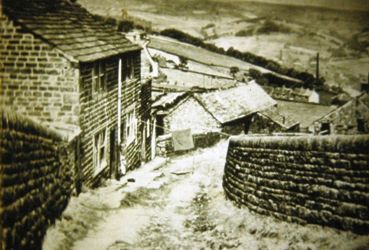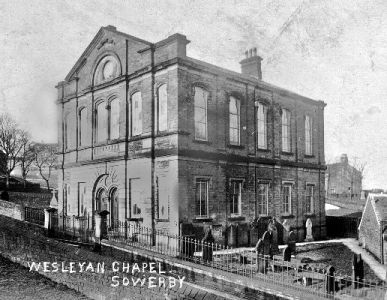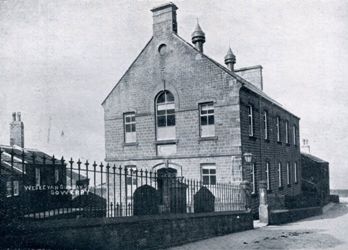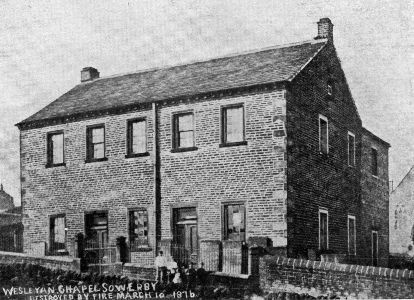
Rooley Lane Methodist Chapel

The first meeting place, after being used to the full, became too small for the increasing numbers of members and followers. A larger and more commodious building was erected in the year 1787, at an estimated cost of £420. It was a bold task to undertake the building of a chapel in those days. Money was short and financial help so difficult to obtain, yet they faced their difficulty and the new building rose steadily on the hillside.

It was a custom of the members in those days, to go to the Church of St Peter in Sowerby for the administration of the Sacrament of the lord's Supper. In course of time the people became dissatisfied with that arrangement, and in the year 1779, a society meeting was held to consider the matter. A petition was drawn up and posted, asking permission to have the sacrament administered in their own Chapel, by their own ministers. The petition was granted and the members of the Methodist Church in Sowerby became separated entirely from the Church of England. On the December 8th 1799, the first sacramental service was conducted in the Chapel and the collections on the night amounted to 9s 1d.

The Sunday school was founded in 1805. The scholars were taught on a portion of the ground floor of the old Chapel, without any vestry accommodation. Old fashioned benches separated the classes, the floor was flagged and sanded and the room was heated by a large stove in the centre of the space occupied. In those old days reading and writing were taught as well as the scriptures. After the first two years an inventory of the assets of the School was taken and it was found to consist of 28 spelling books, 98 battledores, 40 testaments, 72 spelling books and 200 little books, which indicates that the school had approximately 200 pupils and teachers.

| 1808 | Jan 18th | Seven bibles at 2/8 | 18s 6d |
| 1811 | Oct | Postage on letters | 1s 0d |
| 1814 | July 1st | Paid for writing teacher (One Quarter) | 13s 0d |
| 1814 | July 9th | Bad shilling collected | 1s 0d |
| 1815 | July 11th | Ale for scholars | 4s 6d |
| 1815 | July 11th | Nails to make stand with | 6d |
| 1820 | Oct 16th | Calico to cover Testaments | 3s 2d |
| 1821 | Apr 21st | 5 1/2 stone of flour | 14s 0d |
| 1821 | Apr 21st | 12lbs of currents | 11s 10d |

The occasional supplies of ale mentioned for the scholars seem regrettable when viewed nowadays, but possibly it was safer than drinking their piped water. Up to this time it was usual to loan books to teachers and scholars for a halfpenny per two week period, but in 1824 it was agreed to loan books free of charge,, provided that the books were not damaged or kept beyond their time.
A new vestry and orchestra were added to the Chapel in 1858 at a cost of £114, and in 1864 the Chapel was further enlarged at an outlay of £270. An organ was purchased and fitted in 1876 and in this year the estimated value of the premises was £1500.
In the year 1875 a regrettable division occurred in the Church at Rooley Lane. For some time discussions had taken place in different Church meetings on the temperance question, and unfortunately these discussions culminated in a section of the brethren separating themselves from the society. A new Church was formed in Towngate, Providence Methodist Church, and joined to the conference of United Methodist free Churches. There was bitterness at the time but things settled down amicably in time.

To raise funds for the rebuilding, boxes were placed in the village street to appeal to all the sightseers that visited the devastation, and to crave the sympathy of those who had come from a distance to view the site of the fire. Large collections were taken and the church was assured of a speedy rebuild, through much difficulty the new Chapel was rebuilt and opened in 1877.
The Church survived and prospered along with the other five Churches and Chapels in the Sowerby district, holding events and concerts throughout the year and sharing the camaraderie of a close knit community. This state of affairs continued up to the second world war; after the war the congregations tended to dwindle, and eventually to dry up, making it impossible to maintain the buildings which eventually closed.
For the location please see the main village photograph